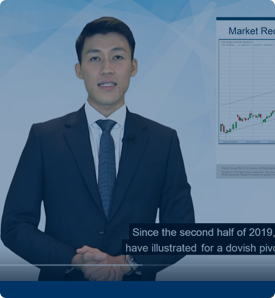Pledged Asset
Table of Contents
Pledged Asset
To secure a debt or loan, a borrower transfers a valuable asset to the lender, making it a pledged asset. The down payment for a loan can be decreased with pledged assets. A more favourable interest rate or loan repayment terms might be offered by the asset as well. Borrowers continue to benefit from interest and capital gains while keeping ownership of the assets.
What Is a Pledged Asset?
Any property that serves as security for a loan is called a pledged asset. Because the lender can seize and sell the pledged asset in the event of a borrower’s default on loan payments, the lender’s risk is reduced. Borrowers could negotiate a lower interest rate with lenders accepting pledged assets since it lowers their risk.
In certain cases, the lender may insist that the borrower put the pledged asset—cash or securities—into an account under their control. This way, the lender can still seize the asset in case of failure on the loan, but the borrower will still get dividends and interest payments from the security issuers. Lender and borrower discussions determine the precise quantity and kind of the pledged assets.
Lenders are required by law to return all pledged assets to borrowers upon repayment of loans.
Understanding Pledged Asset
Learning the fundamentals of pledged assets, including how they function and why they are important in finance, is key for grasping the idea.
The Basics of Pledged Assets
The most basic definition of a pledged asset is any valuable thing that a borrower puts up as security for a loan or line of credit. Real estate, cars, and jewellery are tangible assets, while stocks, bonds, and intellectual property rights are intangible assets.
The pledged asset functions as a guarantee to reassure the lender that they will be repaid in full. Lenders can reduce their risk when lending money with collateral since they can sell or confiscate the asset if the borrower doesn’t pay back the loan.
The Financial Significance of Pledged Assets
In the financial sector, pledged assets are vital because they give lenders more security. Because of the decreased risk, lenders can provide borrowers with more attractive terms and cheaper interest rates.
Having the option to pledge assets might be advantageous for borrowers, especially those with a weak credit history or those who encounter difficulties in obtaining traditional financing. These people or companies can get the money they need to take advantage of possibilities that would have been out of reach without the use of pledged assets.
Working on Pledged Asset
Lenders may require borrowers who fail to meet their repayment commitments to put up collateral in the form of pledged assets. Pledged assets are another way lenders verify the borrower has some financial investment in the funded acquisition. Simply said, lenders are more willing to provide a loan if they know that the borrower would also be risking some of their own money or assets.
Securities like stocks and bonds are only a few examples of the many valuable assets that may be pledged as collateral. To guarantee a loan, a lender may order an appraisal of collateral whose value is questionable. This will ensure that the loan is not overly risky.
Pledged assets are illustrated here. Imagine a businessperson seeking a $2 million loan to launch a new firm. If the lender wants it, they may have to put their investment account up as security for the big loan. In the event of a default by the businessperson, the lender would be legally entitled to all of the assets held in the investment account, including stocks and bonds.
In this scenario, the businessperson would retain ownership of the stocks and bonds and have the authority to oversee the account. However, the lender may seize these assets if they are unable to repay the debt.
Benefits of Pledged Assets
Borrowers can gain access to funding that might be out of reach without the use of pledged assets. Lower interest rates and increased borrowing limits are two examples of positive loan terms that might result from pledged assets.
Assets committed provide lenders with more protection and less risk. The lender’s portfolio stands to gain from increased assurance in lending and, maybe, reduced default rates.
Examples of Pledged Assets
Consider the following scenario: John has $60,000 to put towards the down payment on a $300,000 property. He borrows the remaining $240,000 from a bank mortgage loan so he may buy the house. The house is pledged as an asset in the loan arrangement.
If John stops paying his mortgage payments (defaults on the loan), the bank has the legal authority to foreclose and seize the property. The bank can recover the funds it loaned John after the foreclosure sale of his house. Likewise, let’s think about a commercial case. Manufacturing companies often use their production equipment as collateral when they require loans of up to half a million dollars for expansion. The bank has the right to confiscate and sell the company’s equipment to recoup the funds it provided to the business if the latter defaults on the loan repayment terms.
In both cases, the home and the industrial equipment are assets that have been promised. If the borrower fails to repay the loan, the lender might use them as collateral to recoup their losses.
Conclusion
Ultimately, pledged assets play a crucial role in the financial system by offering protection to lenders and possibilities to borrowers. To make educated selections when pursuing collateral-based financial arrangements, it is helpful to understand what pledged assets are, the different kinds of pledged assets, and their function.
Borrowers and lenders alike should weigh the pros and cons of using pledged assets before committing. A transparent and win-win transaction is possible when all parties involved are in the loop and understand their respective legal responsibilities. In the ever-changing world of finance, pledged assets—whether physical or virtual—are crucial for people and companies to take advantage of opportunities and achieve their financial objectives.
Frequently Asked Questions
Borrowers can quickly get the money they need with a PAL since it lets them borrow against their assets instead of selling them. Since a PAL is a type of revolving credit, you may take out money whenever you need it and pay it back whenever you want.
The purpose of a pledge is to guarantee payment to a creditor by serving as a legal instrument to safeguard the obligation. This method is distinct from pledging since the collateral is a moveable intangible asset like a receivable or a share of the company’s capital rather than a physical asset like a building.
Cash, stocks, bonds, and other equity or securities are examples of pledged assets that lenders use to secure debt or loans.
Nevertheless, there are risks associated with utilising pledged assets. The pledged asset could not be worth enough to service the loan if its value drops a lot. Everyone involved, from borrowers to lenders, stands to lose in this scenario.
The possible repercussions of loan default should also be thoroughly considered by borrowers. It is essential to carefully assess the repayment responsibilities since the loss of a pledged asset might have serious personal and financial consequences.
When a shareholder transfers ownership of their shares to a lender, they are pledging those shares as collateral for the loan. The shares are held by the bank or financial institution until you return the loan in full.
Related Terms
- Adjusted distributed income
- International securities exchanges
- Margin Requirement
- Stochastic Oscillator
- Prepayment risk
- Homemade leverage
- Prime bank investments
- ESG
- Capitulation
- Shareholder service fees
- Insurable Interest
- Minority Interest
- Passive Investing
- Market cycle
- Progressive tax
- Adjusted distributed income
- International securities exchanges
- Margin Requirement
- Stochastic Oscillator
- Prepayment risk
- Homemade leverage
- Prime bank investments
- ESG
- Capitulation
- Shareholder service fees
- Insurable Interest
- Minority Interest
- Passive Investing
- Market cycle
- Progressive tax
- Correlation
- NFT
- Carbon credits
- Hyperinflation
- Hostile takeover
- Travel insurance
- Money market
- Dividend investing
- Digital Assets
- Coupon yield
- Counterparty
- Sharpe ratio
- Alpha and beta
- Investment advisory
- Wealth management
- Variable annuity
- Asset management
- Value of Land
- Investment Policy
- Investment Horizon
- Forward Contracts
- Equity Hedging
- Encumbrance
- Money Market Instruments
- Share Market
- Opening price
- Transfer of Shares
- Alternative investments
- Lumpsum
- Derivatives market
- Operating assets
- Hypothecation
- Accumulated dividend
- Assets under management
- Endowment
- Return on investment
- Investments
- Acceleration clause
- Heat maps
- Lock-in period
- Tranches
- Stock Keeping Unit
- Real Estate Investment Trusts
- Prospectus
- Turnover
- Tangible assets
- Preference Shares
- Open-ended investment company
- Standard deviation
- Independent financial adviser
- ESG investing
- Earnest Money
- Primary market
- Leveraged Loan
- Transferring assets
- Shares
- Fixed annuity
- Underlying asset
- Quick asset
- Portfolio
- Mutual fund
- Xenocurrency
- Bitcoin Mining
- Option contract
- Depreciation
- Inflation
- Cryptocurrency
- Options
- Asset
- Reinvestment option
- Capital appreciation
- Style Box
- Top-down Investing
- Trail commission
- Unit holder
- Yield curve
- Rebalancing
- Vesting
- Private equity
- Bull Market
- Absolute Return
- Leaseback
- Impact investing
- Venture Capital
- Buy limit
- Asset stripper
- Volatility
- Investment objective
- Annuity
- Sustainable investing
- Face-amount certificate
- Lipper ratings
- Investment stewardship
- Average accounting return
- Asset class
- Active management
- Breakpoint
- Expense ratio
- Bear market
- Annualised rate of return
- Hedging
- Equity options
- Dollar-Cost Averaging (DCA)
- Due Diligence
- Contrarian Investor
Most Popular Terms
Other Terms
- Options expiry
- Settlement currency
- Federal funds rate
- Active Tranche
- Convertible Securities
- Synthetic ETF
- Physical ETF
- Initial Public Offering
- Buyback
- Secondary Sharing
- Bookrunner
- Notional amount
- Negative convexity
- Jumbo pools
- Inverse floater
- Forward Swap
- Underwriting risk
- Reinvestment risk
- Final Maturity Date
- Payment Date
- Secondary Market
- Mark-to-market
- Yield Pickup
- Subordinated Debt
- Trailing Stops
- Treasury Stock Method
- Bullet Bonds
- Basket Trade
- Contrarian Strategy
- Exchange Control
- Notional Value
- Relevant Cost
- Dow Theory
- Speculation
- Stub
- Trading Volume
- Going Long
- Pink sheet stocks
- Rand cost averaging
- Sustainable investment
- Stop-limit sell order
- Economic Bubble
- Ask Price
- Constant prepayment rate
- Covenants
- Stock symbol
- Companion tranche
- Synthetic replication
- Bourse
- Beneficiary
Know More about
Tools/Educational Resources
Markets Offered by POEMS
Read the Latest Market Journal

本文旨在为中级外汇交易者提供必要的信息和知识。它将涵盖我们上一篇文章 “五分钟看懂世界上最活跃的市场-外汇差价合约(FX CFD)...

解锁台湾股市的投资潜力!深入了解由强大的技术驱动型经济推动的股票市场,2023 年机械和电气设备将占出口的 69%。在政治稳定、投资者友好的法规和健全的法律框架下,探索台积电和富士康等全球顶级企业。台湾股市值得称赞的历史表现和在国际贸易中的的重要性使其更具吸引力。在这个科技实力雄厚、经济稳定、充满活力的股票市场中,抓住增长机遇!

了解外汇市场 外汇交易市场又称外汇市场,是一个买卖货币的全球性金融市场。它是全世界规模最大、流动性最强的金融市场,每日交易量超过 6 万亿美元。但外汇市场有一个重要却常被忽视的一点,就是它受交易心理的影响。在本文中,我们将探讨外汇市场的复杂性,还有把重点放在交易心理与传统交易策略共同发挥的关键作用...

五分钟看懂世界上最活跃的市场 -外汇差价合约(FX CFD)
外汇交易市场俗称外汇或外汇市场,是全球金融市场的支柱。它是世界上最活跃的市场,2022 年 4 月,全球交易额达到创纪录的每天 7.5 万亿美元[1] 。这个活跃的市场为交易者提供了利用货币价格波动赚取利润的机会。在本文中,我们将解释外汇市场的基本原理,助您了解其投资机制。 什么是外汇? 外汇市场是一个分散的全球市场,世界上所有货币都在这里进行交易...

随着通胀数据趋向 2% 的理想目标,人们普遍乐观地认为,在任何可能的降息之前,市场都不会受到不利影响。以下是美股市场2024年的一些重要事件,投资者在做出投资决策时可以参考留意。

根据《东南亚态势报告:2023》,失业和经济衰退是当前东南亚面临的主要挑战。各国采取了各种政策和措施以恢复经济,尽力摆脱新冠疫情的影响。尽管如此,越南在经济和社会方面展现出了令人满意的复苏迹象,经济增长逐季上升,成为世界经济的亮点之一。虽然全年GDP增速放缓至5.05%,低于政府6.5%的目标,但越南仍然是地区和世界经济增速较快的国家之一。






















